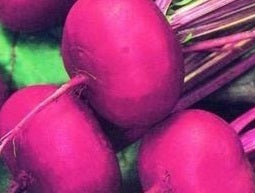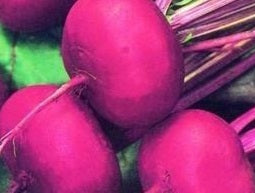Beetroot Egyptian
Beetroot Egyptian
Packet Size: 50 seeds
Couldn't load pickup availability
This lovely heirloom has a pedigree stretching back some 150 years – a sure indication that Beetroot Egyptian is both tasty and reliable. It also grows almost entirely above ground. This allows you to see the roots developing their distinct slightly squashed shape. They are speedy (pull from 7 weeks), very sweet and the perfect size for serving whole. Ideal for boiling, pickling, baking, & freezing or grating to enjoy raw in a salad.
SOW: from March to July & in mild areas or in a cold frame sow in early autumn (September). Pop in the seeds at about 1-2cm deep, Make small sowings 2-3 weeks apart for a continuous supply. Germination can take 3 weeks, patience is needed!
GROW: beet seeds are a cluster and will need thinning or pull some for use when young (leaving the rest to grow on). Keep weed free and try not to let the soil dry out. Ready for harvest from about 7 weeks from germination. These stay in good condition and are unlikely to bolt.
ENJOY: these are deliciously sweet, they can be grated raw for salads or cooked. Pickle or freeze for longer storage. The flattened roots and above ground growing means they are sometimes known as Turnip-rooted beets.
Did you know...beetroot isn’t just for eating; it can be used as a natural dye too. The older roots give a deeper crimson shade and because the flesh softens with age they’re easier to work with. The actual colour you get depends on the mordant you use the age and variety of your beetroot: soft yellow, warm brown shades through to rich red are possible and it’s well worth having a go and experimenting. Commercially the red pigment betanin is taken from the roots and used as a natural food colouring giving extra brightness to tomato paste, sauces, jams, ice cream and sweets amongst other uses.

Collapsible content
Sowing
- Mar
- Apr
- May
- Jun
- Jul
- Sep
Harvesting / Flowering
- Apr
- May
- Jun
- Jul
- Aug
- Sep
- Oct

